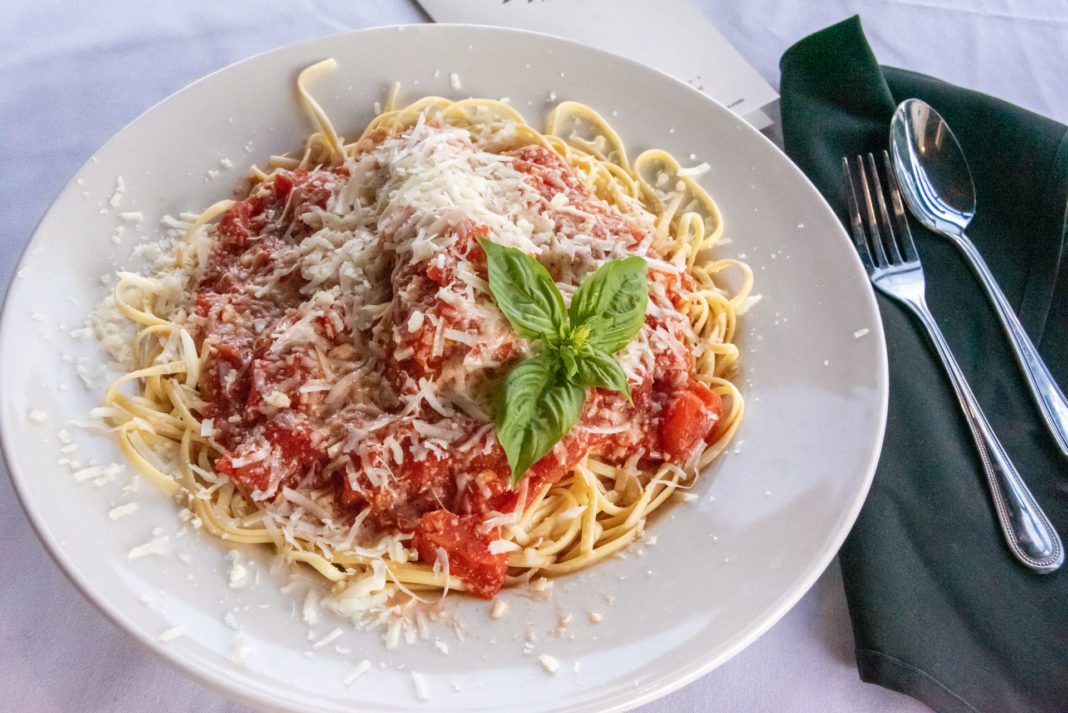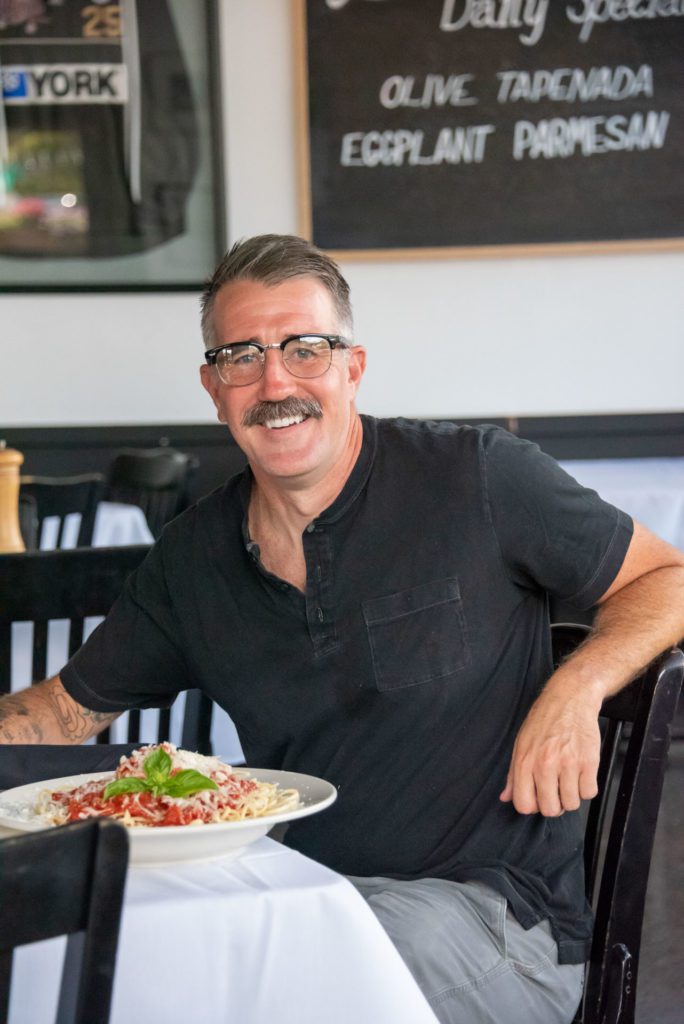“I grew up in a typical Italian household,” says Sonny Dalesandro. “There was always food cooking, and I was always being asked to help out.” When Sonny was twelve, his father Buzz opened the original Dalesandro’s restaurant downtown. Sonny became a busboy and, a few months later, was promoted to line cook.
“That must have been so exciting for you,” Sonny was often told.
“No!” he replied. “I was twelve. I wanted to be outside playing with friends. But I wanted my dad to succeed. I knew he was working his butt off.” (Yes, Sonny used a more colorful word.)
“I wanted to help. Still, the place would be full, I’d be making little lunch items and I’d see people eat them and leave happy and probably come back the next day. That made me happy. And that’s how my career started, line cook at twelve with my dad yelling at me,” he says with a laugh. “He fired me three times that summer.”
Buzz sent his little line cook to Cascia Hall. In his senior year, Sonny dropped out to play soccer for a pro team, the Milwaukee Wave. Then, he moved to London. But those childhood times at Dalesandro’s must have got him hooked, because before he knew it, he moved back to Tulsa and found himself persuading his father to join him in opening a new version of Dalesandro’s.
The menu, which has changed little since opening night, was familiar to the original loyal fans – and there were many.
Ask Sonny and he will tell you, truthfully, that all the dishes served at Dalesandro’s are family recipes. Yet if you visit Basilicata, the rugged, ancient region in the far south of Italy that Sonny’s ancestors came from, you won’t find any of these dishes. But the spirit is the same.
“Basilicatan food,” Sonny says, “revolves around crushed red peppers and simplicity. Spicy, rustic, simple, made with care. We do that here at Dalesandro’s, and we even use crushed red peppers in 60 or 70% of our dishes.”
It was Sonny’s great-grandmother who first left Italy for America.
“Our recipes begin with great-grandma’s adaptation of the food she grew up on, expressed with modifications made in America,” says Sonny.
Swordfish piccata was one such modification. It isn’t from her home village, but she adopted the recipe and made it her own. She served it only on very special occasions. Dalesandro’s used to serve it once a week, honoring her desire to make it special, and on those days you couldn’t get in unless you’d reserved days or even weeks in advance. Now they serve it daily.
The story of Dalesandro’s, Sonny says, isn’t complete unless you mention the people who work there.
“Especially Saul Galvez and Angie Veliz, they have been here a total of 35 years,” says Sonny.
“But this article is about you, Sonny, not them,” I tell him.
“Well, I’m not me without them!” he replies. “They’re family.”
Asked why the menu changes rarely if ever, Sonny’s reply is simple.
“I don’t invent new dishes because the old ones make people happy. I am pleased to be the least creative chef in Tulsa. Other chefs – and what great talents we have in Tulsa – use food as an expression of art. My job for 20 years has been to preserve the way my family’s food is offered to those who come through the doors.”
At this point an elderly couple walks through those doors, obviously longtime patrons, and Sonny stops talking to hug both of them.
“And, just like when I was twelve,” Sonny says when he returns, “it still makes me happy to give people good food.”
Sonny Dalesandro’s Pasta Dish
Ingredients:
Olive oil
Garlic
Crushed red pepper
Roma or San Marzano tomatoes
Sweet basil
Fennel sausage
Linguine (or any) pasta
Pecorino Romano
Directions:
Blanch 8 to 10 tomatoes.
Dice 6 or 7 of the tomatoes after blanching and pulverize the other 2-3 tomatoes. This will later give your sauce a thicker consistency.
Lightly coat a pan with olive oil and add 5 or 6 pieces of finely minced garlic on medium heat.
As the garlic begins to brown, add a pinch of crushed red pepper (this can obviously vary based on how spicy you want your sauce).
After a minute or two, turn your heat off and let the pan cool. Tomatoes can be easily scalded, so the oil must cool for 10-15 minutes to avoid that.
Add diced and pulverized tomatoes and return to a medium or low heat.
Once tomatoes have been added, take the leaves of 3 or 4 sprigs of sweet basil (or again, to taste or preference) and squeeze the leaves firmly in your hands. This helps release the flavor into the sauce or as my father would call it “perfuming” the sauce. Stir frequently. This sauce cannot be over stirred (make this the duty of the youngest person in your home if you to follow Italian tradition).
In a separate pan, brown off your fennel sausage. When browned, add the sausage into sauce.
When the sausage in sauce is temped to145°-155° the sauce is ready.
Our family’s preference is to cook on low heat with continual stirring for a very lengthy period of time for the best result.
Cook pasta to aldente and plate. Add your red sauce and sausage.
Finish with Pecorino Romano and serve…the same way we have in Tulsa since 1990.



























